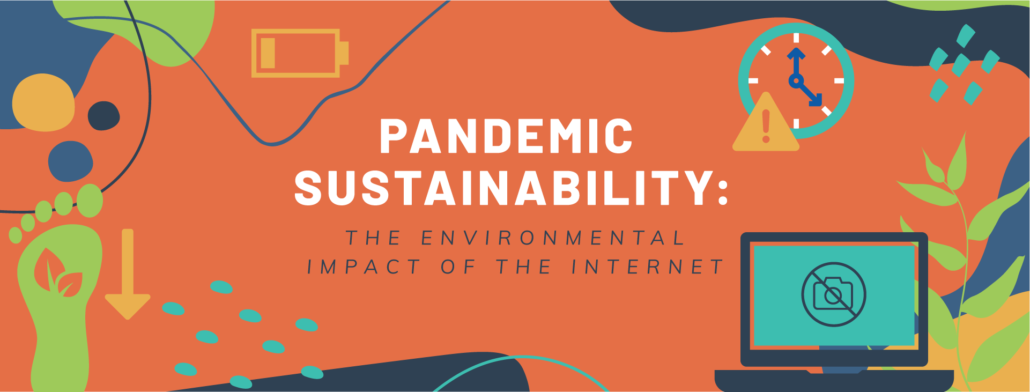Written by: Sarah Gibes
Ever wondered how much energy you use when you attend hour-long Zoom meetings or binge-watch Netflix? A new study, published in December by a team of multidisciplinary scholars, suggests an answer.
The study demonstrates that, as a whole, carbon emissions have dropped during the COVID-19 pandemic as lockdowns slashed carbon emissions from commuters using cars and public transport. However, the amount of energy usage originating from internet usage has increased.
“We looked at the amount of energy needed to store and transmit data via wireless networks, from the infrastructure and data center side,” said Renee Obringer, Ph.D. and lead author on the publication.
On a whole, the energy required to run the internet produces about 3.7% of the world’s carbon emissions. That’s equivalent to the emissions of the airline industry.
Determining energy usage is a complex process, and scientists use multiple ways to evaluate energy usage. One way is through measuring carbon emissions–the amount of carbon dioxide released into the atmosphere as a result of a particular activity. For a commute, this includes the combustion of fuel in a car engine, but it also includes the carbon-based energy used to transport and produce the gas, as well.
In addition to measuring the grams of carbon released into the atmosphere, scientists also examine the amount of water required for a particular activity, as well as the approximate area of land needed. Together, carbon emissions, water usage, and land all create an individual’s environmental footprint.
Different countries have different environmental footprints, depending on how they obtain their energy. Brazil, for example, produces about 70% of its electricity through hydroelectric dams, and as a result has a much lower carbon footprint than most of the world, while it also has a much higher water footprint. The United States, which relies heavily on fossil fuels for energy production, has a higher than average carbon footprint but a lower water footprint, according to Obringer.
Throughout the pandemic, most countries have seen an approximately 20% increase in internet traffic as a result of the pandemic, according to the study. To sequester that amount of carbon in natural habitat would require a space about twice as large as the lower peninsula of Michigan. The water footprint is equivalent to 300,000 Olympic-sized swimming pools, and the land footprint is equivalent to the area of Los Angeles.
The study also investigated the impact of video usage on the environmental footprint. The scientists found that video-based platforms, such as Facebook Live, Tiktok, or Zoom significantly increase energy usage and subsequently the environmental footprint.
The energy required for the internet includes both the electricity required by individuals’ devices, such as computers, phones, and televisions, as well as the energy required to store and upkeep data processing centers. Data processing accounts for a large portion of the internet’s carbon footprint. As a result, decreasing the amount of data required will decrease the environmental impact of internet usage.
Simple ways to decrease the amount of data used on the internet include decreasing the video quality of your Netflix player or turning off your camera during virtual meetings.
Even though remote work may have a lower total carbon impact than commuting and working in-person, Obringer noted that it is always possible to do better.
“By taking small actions and being aware of our actions while we work remotely, we can improve and lower our emissions even more than savings,” Obringer said. “Our aim wasn’t to tell people to always turn off your video. We hope to encourage people to be more mindful and integrate these practices into their lives.”


